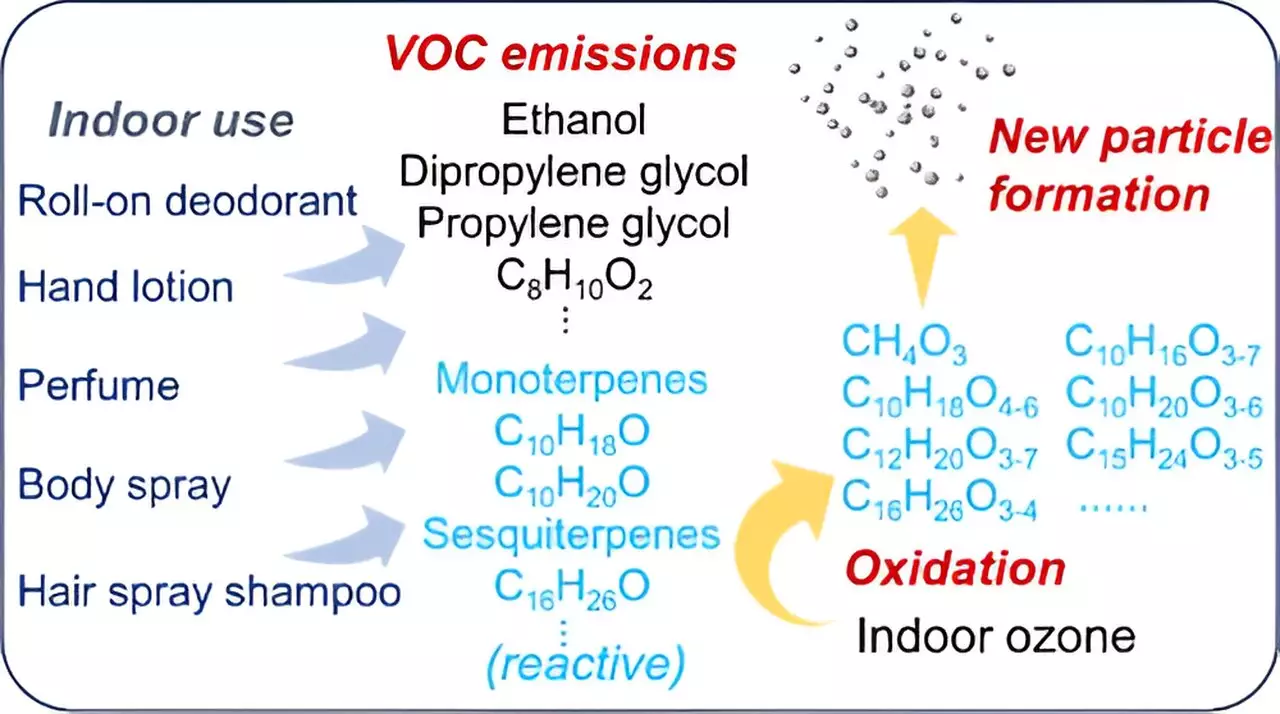In recent years, the focus on the quality of indoor air has intensified, revealing that common household items contribute significantly to pollution levels within our own homes. A new study from a research team at the École Polytechnique Fédérale de Lausanne (EPFL) highlights an unsettling aspect of our daily routines—specifically, the personal care products we frequently apply on our bodies. This research investigates how these seemingly innocuous items release a complex mix of volatile organic compounds (VOCs) into indoor air, potentially compromising respiratory health. The synthetic aroma of deodorants, perfumes, and skin lotions may be more hazardous than we realize.
The Research Investigation
Led by Dusan Licina, an assistant professor at EPFL, the project involved a detailed examination of various personal care products, including popular brands found in stores across Europe. The research employed environmental chambers—specialized spaces designed to replicate indoor conditions—allowing scientists to meticulously track air quality alterations following the application of these products. The researchers monitored both standard usage scenarios and those augmented with ozone to simulate realistic environmental influences, given that ozone often enters living spaces through open windows or certain indoor activities.
During this research, sophisticated analytical instruments captured a staggering variety of VOCs—more than 200 were identified, including ethanol and monoterpenes. The results revealed that while these compounds dissipated over time with standard ventilation, the introduction of ozone catalyzed further reactions, resulting in the formation of new and potentially unhealthy particles. Some substances underwent a nucleation process, creating ultrafine particles that could easily penetrate deep into the lungs, suggesting a level of respiratory risk that has not been adequately addressed to date.
Despite the clarity of the data obtained, lingering questions pertain to the actual health implications of daily exposure to these VOCs and newly formed particles. Licina emphasizes that we have only scratched the surface of understanding how these pollutants impact human health. The current gaps in toxicological research heighten concerns regarding the safety of applying high-VOC products directly to the skin, close to our breathing zones.
As individuals increasingly prioritize personal hygiene and grooming, such a revelation raises alarms about our collective well-being. The health effects may extend beyond immediate respiratory issues to longer-term chronic conditions. Thus, a pressing requirement emerges for further studies that examine the complexities of these pollutants and their potential linkages to adverse health outcomes.
Engineering Solutions for Cleaner Indoor Air
In light of this information, the EPFL research team proposes several actionable steps to mitigate the impact of personal care products on indoor air quality. One strategy involves enhancing ventilation systems in buildings. Improved airflow—especially during the use of VOC-laden products—can help reduce the concentration of harmful compounds. Additionally, integrating air-cleaning technologies, such as activated carbon filters combined with other filtration media, could prove beneficial in capturing and neutralizing VOCs before they circulate through living spaces.
Furthermore, limiting the extent of indoor ozone accumulation also emerges as a vital intervention. Simple measures like ensuring proper sealing of open areas and recognizing sources of indoor ozone—like printers—can contribute to healthier environments.
Besides structural and technological improvements, individual choices also matter significantly. While personal care products fulfill hygiene needs, the EPFL research prompts a re-evaluation of these choices in favor of less chemically reactive and more natural alternatives. This shift not only supports personal health but contributes to overall indoor air quality. While it may be challenging to reduce dependence on everyday products, pursuing naturally-derived alternatives with minimal chemical harm can coexist with lifestyle needs.
Ultimately, the research conducted by the EPFL underscores an important reality: personal care products, while essential to many, represent a nuanced dilemma for indoor air quality. This study triggers an urgent call for awareness, consideration, and change, inviting us to rethink our relationship with the products we often take for granted in our pursuit of daily well-being. As such, continuous research, coupled with informed choices, will be paramount in forging a path towards cleaner and safer indoor environments.

